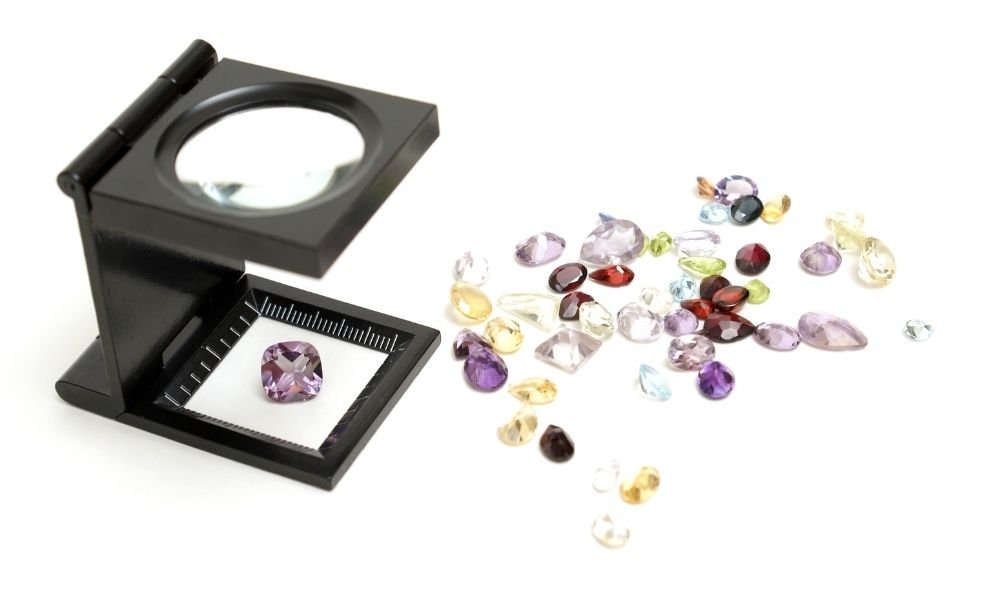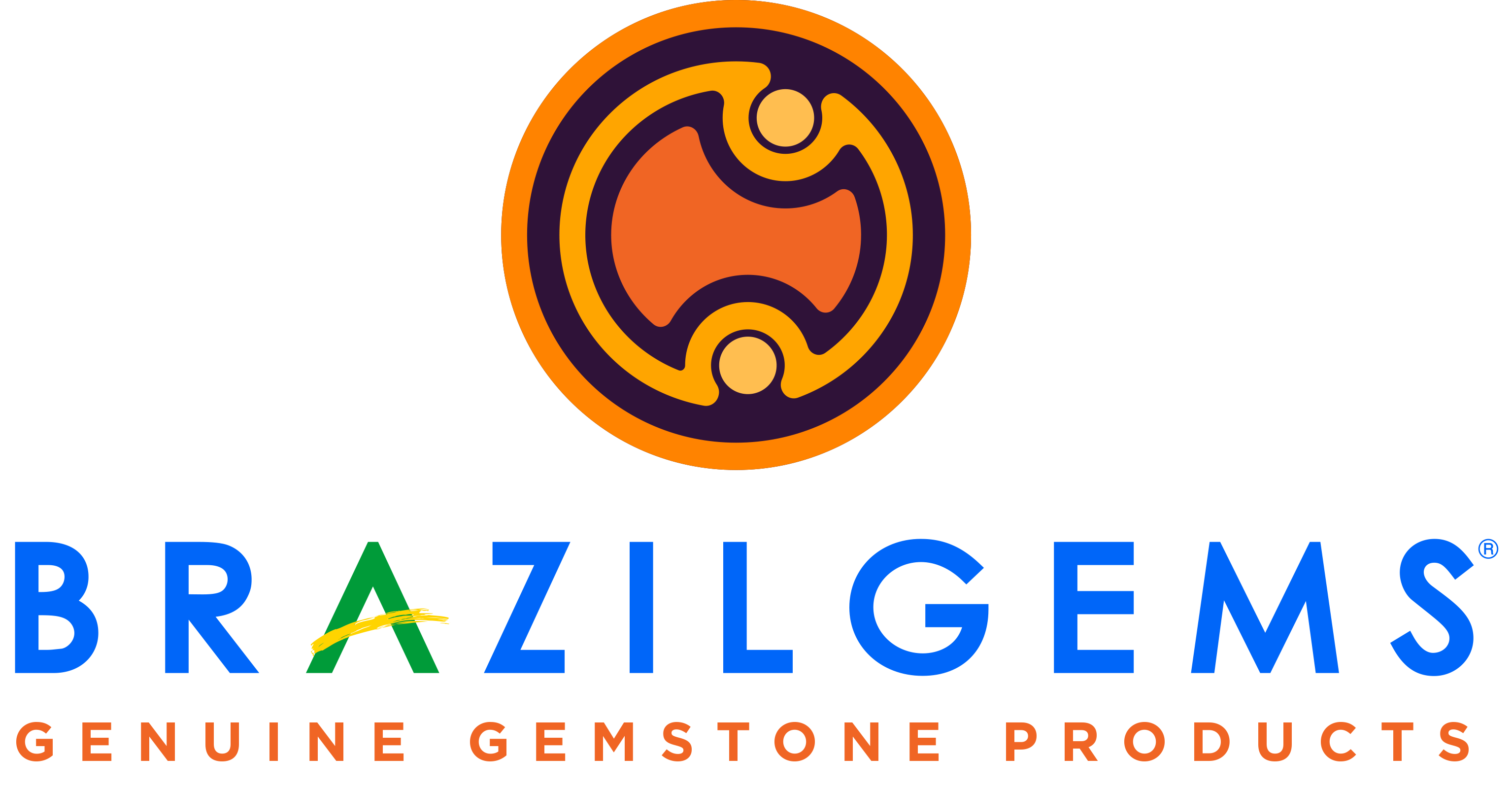Does it matter if a gemstone is authentic? It depends on what you want and if you know exactly what you’re buying. It’s kind of like the difference between a mass-produced art print you can buy at IKEA and a real Matisse masterpiece. They’re both beautiful. But one is real and one is not. Educate yourself with this guide on how to tell if a gem is natural or synthetic.
What Does “Synthetic” Mean?
A synthetic gem is made in a laboratory, not deep inside the earth. It might be a few months old, while the real thing could have been created more than a hundred million years ago. Amazingly, an imitation gem shares nearly all the same chemical, optical, and physical characteristics of an authentic stone (sometimes with a few more compounds). If you put them next to each other, you might not be able to tell them apart. Because of this, there are stringent rules about selling them. A shop that’s trying to pass them off as real is committing fraud and won’t be in business long.
The first synthetic gemstone was fabricated in the late 1800s by a French chemist named Auguste Verneuil. The world was in awe of his technique, which involved flame fusion. But as they became more common, people produced synthetic gems for industrial applications. As for jewelry, the public insisted on the real thing. Today, people use lab-created stones in communications and laser technology, abrasives, and microelectronics.
Over the years, manufacturers have mastered a variety of methods for making lustrous, sparkling, deeply colored, and flawless stones. Depending on what you are buying the gemstone for, it might not matter to you if it’s artificial. For instance, if you’re buying beads to make inexpensive craft jewelry, you might not want to spend more on something natural—or you might find that the price isn’t all that different.
What Defines “Natural”?
A natural gemstone was formed in the earth without human influence. People mine them from naturally occurring veins, while others are found in the water. Different gems are unique to different areas, and some countries—like Brazil—have been blessed with a rich variety of glittering, colorful stones.
The first question many customers ask is, “Has this gemstone been heat-treated?” The truth is that every gem has been treated in some way, and some have been heat-treated to bring out the natural color or improve clarity. This doesn’t make the gemstone artificial. Even cutting and polishing a gem are treatments—and believe us, you wouldn’t be too impressed with a rough diamond.
How Can You Tell the Difference?
There’s only one way to ensure a gem is real or synthetic: you can study to become a licensed, certified gemologist, and then tote a 64-times-magnification microscope around with you. But that can get time-consuming, expensive, and very heavy. Instead, you can try one of these methods:
Read the Description Closely
If you’re shopping online, you have the opportunity to explore the shop’s website and examine the product description for details. Of course, savvy marketing can obfuscate the truth, so pay attention to verbiage. Look for words like:
- Simulated
- Lab-created
- Lab-grown
- Cultured
- Cultivated
- Created
- Faux
- Imitation
- Manmade
- Altered
Ideally, the seller will list the origin of the gemstone or where it was mined. Of course, if you’re talking to the seller in person, there’s one reliable way to learn about a stone: ask! Most shop owners will happily tell you about their materials and products. Some stores might not advertise that they’re selling artificial gems, but will clarify when asked.
Look for Unique Inclusions
If you’re still suspicious about a gemstone, consider this: every single one is different. But mass-produced gemstones are usually identical to each other. They’re also usually flawless. But nature is never flawless, and an up-close look at the gemstone should reveal tiny specks that differ from the specks of its neighbor.
We like to use the term “inclusion” because “flaw” isn’t an appropriate word for such incredible, natural, vivid stones. Gems will have tiny foreign bodies trapped within, like gas or something like carbon. Gemologists use these to assign the stones to certain grades, but gem lovers prefer to think of them as “beauty marks.” They are characteristics that set them apart from each other and add to their natural appeal.
What Are the Benefits of Real Gems?
Again, it depends. If you’re shopping for a gemstone for an engagement ring, you might like what a natural gem embodies and how it relates to your relationship: it’s one of a kind, sparkles from within, will last for centuries, is nearly unbreakable, and so on.
Maybe you’re looking for handcrafted gifts like gemstone trees for sale. Each stone is incredible and unique on its own, but together, they add up to a shimmering homage to the variety and harmony of nature. A larger item, like a table created from an amethyst geode, would just be a gaudy novelty if it weren’t a spectacular, organic wonder.
Unless you’re a gemologist, it’s difficult to tell if a gem is natural or synthetic. The key is transparency. Not literal transparency—unless you’re pricing diamonds—but clarity and honesty from a seller you trust. When you find a shop that holds the same values you do, you can feel confident that your money is supporting a responsible business.
Brazil Gems believes in being absolutely straightforward with our customers, starting with our name. The first thing we want you to know is where our gems come from, because people from around the globe respect Brazil for its brilliant natural resources. Brazil boasts amethysts, agate, tourmaline, sodalite, tiger’s eye, aquamarines, quartz, and many more.
Our gems are always natural, never synthetic, and they come from the mines of our partners in Brazil, who process them in their own facilities. The mines are approved by official environmental organizations. We work with artisans for gorgeous pieces that add a touch of natural splendor to any home or interior. Enjoy the selection on our website, and contact us at Brazil Gems to hear more about our offerings.


